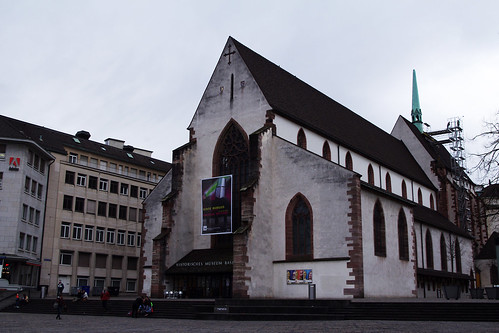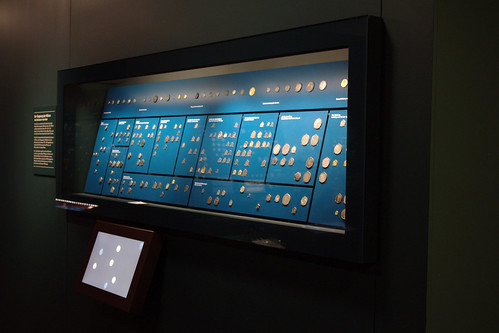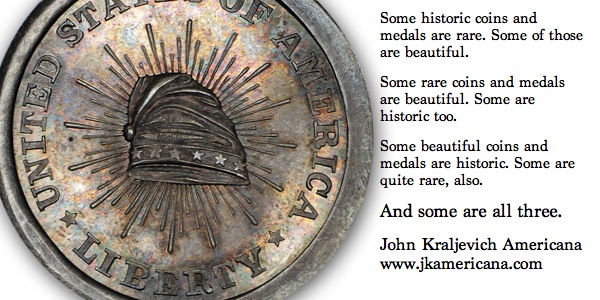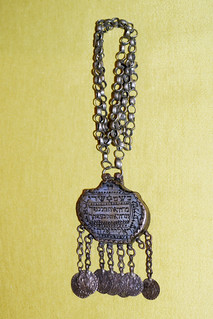
PREV ARTICLE
NEXT ARTICLE
FULL ISSUE
PREV FULL ISSUE
THE NUMISMATOURIST REPORT: MARCH 16, 2014
Howard Berlin submitted the following report on his recent travels. Thanks!
-Editor
While in London I walked around the Green Park area one evening, which is between Hyde Park and Piccadilly Circus. I came to Duke Street St. James’s, which sounded familiar. I walked down and near the end I saw the flag for Christies Auction house. Almost next store was St. James’s Auction House (of coins and medals). I didn’t have my camera that evening so I don’t have any pictures of these two places. Earlier in the day though, I did snap a picture of the location of Dix, Noonan, Webb on Bolton Street in Londinium’s Mayfair section My next stop was Zurich, where I would meet with Hortensia von Roten, a numismatic curator and historian at the Swiss National Museum, or Landesmuseum Zurich. She was a big help providing needed resources of the museum for my Numismatourist book. Like many museums throughout Europe, the Zurich venue is being renovated and a new wing is also being added. Until 2016, the coin cabinet (collection and library) is temporarily located at the collections center of the Swiss National Museum in Affoltern am Albis (about an half hour from Zurich by train). I then travelled to Basel. While there, two museums were of interest. But first, I took a 15-minute S-bahn ride over the border to the neighboring German city Lörrach for the day to visit with Ursula Kampamn and her capable assistant, Björn Schöpe. E-Sylum readers will recognize Ursula’s postings as the editor and publisher of the on-line CoinsWeekly (and the German version, MünzenWoche). After arriving at her office, a two-block walk from the city’s Stetten train station, I had some time to share with Ursula and Björn, who in addition to sharing the writing duties in both German and English, speaks fluent Italian and does whatever else needs to be done. Ursula remarked that the actual writing of CoinsWeekly takes only one day after collecting the news happenings since the previous week’s edition. Both the English and German versions are usually finished for distribution to more than 6,000 subscription-free readers in 120 countries by noon on Thursday. All writing is done without using software to translate from one language to the other, like on-line translators by Google and Bing. There is no voice recognition software used either to speed up the process either. Soon, the two-person staff of Ursula and Björn will add a third member to handle increased workload of providing outsourced editorial services for many numismatic auction houses which Ursula has as clients. After enjoying some espresso coffee, some cake, and chatting about the world events, I was taken on a brief tour of the three-room suite of offices. There is no shortage of numismatic reference material here. In both Ursula’s office, which is very much neater than mine, and a temporary room, there are about 6,000 books, journals, and the ubiquitous Langenscheidt German-English dictionary on one shelf to aid in the background research for their articles. In Basel, one museum was the Jewish Museum of Switzerland, which had a few items of numismatic interest. On the top shelf of one case, there was displayed a variety of 20 ancient coins of Judea. These included those issued by Hasmonian kings (Alexander Jannaeus, Herod the Great, Herod Archelaus), Aggripa I, Pontius Pilate, a year 3 shekel of the revolt, several Judea Capta (70 AD) and Bar Kochba Revolt coins (132-135 AD). The bottom shelf had a display of 12 medals ranging from the mid-1700s to the early1900s. These most commemorated anniversaries and birthdays, like the 70th birthday of Solomon Mayer Rothschild (1844), the 80th birthday of Sir Moses Montefiore (1864), or the commemoration of the 2nd Zion congress (1898).
The other museum in Basel I went to was the Basel History Museum, one of the city’s most popular tourist attractions. It is also known as the Barfüsserkirche (literally, barefoot church) which stands on the site of an original church dedicated in 1256, and later, a Franciscan monastery. Since it was the first Sunday of the month, admission to the permanent exhibits was free. Currently, the exhibition is thought to be the largest permanent exhibition of coins and medals in Switzerland, with more than 2,100 numismatic objects on display. Highlights are stretching from excellent classical coins like the Dionysos stater of Naxos and an Euainetos dekadrachm of Syracuse through Erasmus’ specimen of the Dacian Koson stater. Also displayed are a solidus of the Merovingian king Theudebert I to 17th century siege money (“Belagerungsklippen”), Swiss medieval and early modern rarities. There is even a forgery display with self-test function asking, “Which coin is a forgery?”
Howard provided the following photos and images from his travels. Thanks!
-Editor

Photo 1. The front entrance of the Swiss National Museum, which is currently under renovation and expansion.

Photo 2. Ursula Kampmann, the editor and publisher of CoinsWeekly, sits at her desk ready to start on another project.

Photo 3. The Barfüsserkirche, home to the Basel Historical Museum, since 1894 which stands on the site of an original church dedicated in 1256, and later, a Franciscan monastery.

Photo 4. Münzen sind zum Anfassen da (Coins are to be touched there). One of the exhibits of the Basel Historical Museum allows making rubbings of early Basel, Roman, and Celtic coins. Pencils and paper are provided.

Photo 5. One of the more than 15 wall-mounted exhibit cases, many of which also a included a touch-operated computer screen explaining further about each individual coin in its historical context. Photo 6 (shown in article above). 20th-century amulet from Isfahan. It contains the Hebrew inscription: “God as Shaddai” (“almighty” – one of the 72 names of God) and has the first verse of the shema prayer: “Hear [O] Israel, the Lord is our God, the Lord is one.” Suspended from chains are seven silver Persian coins.

Wayne Homren, Editor The Numismatic Bibliomania Society is a non-profit organization promoting numismatic literature. See our web site at coinbooks.org. To submit items for publication in The E-Sylum, write to the Editor at this address: whomren@gmail.com To subscribe go to: https://my.binhost.com/lists/listinfo/esylum All Rights Reserved. NBS Home Page Contact the NBS webmaster 
|

